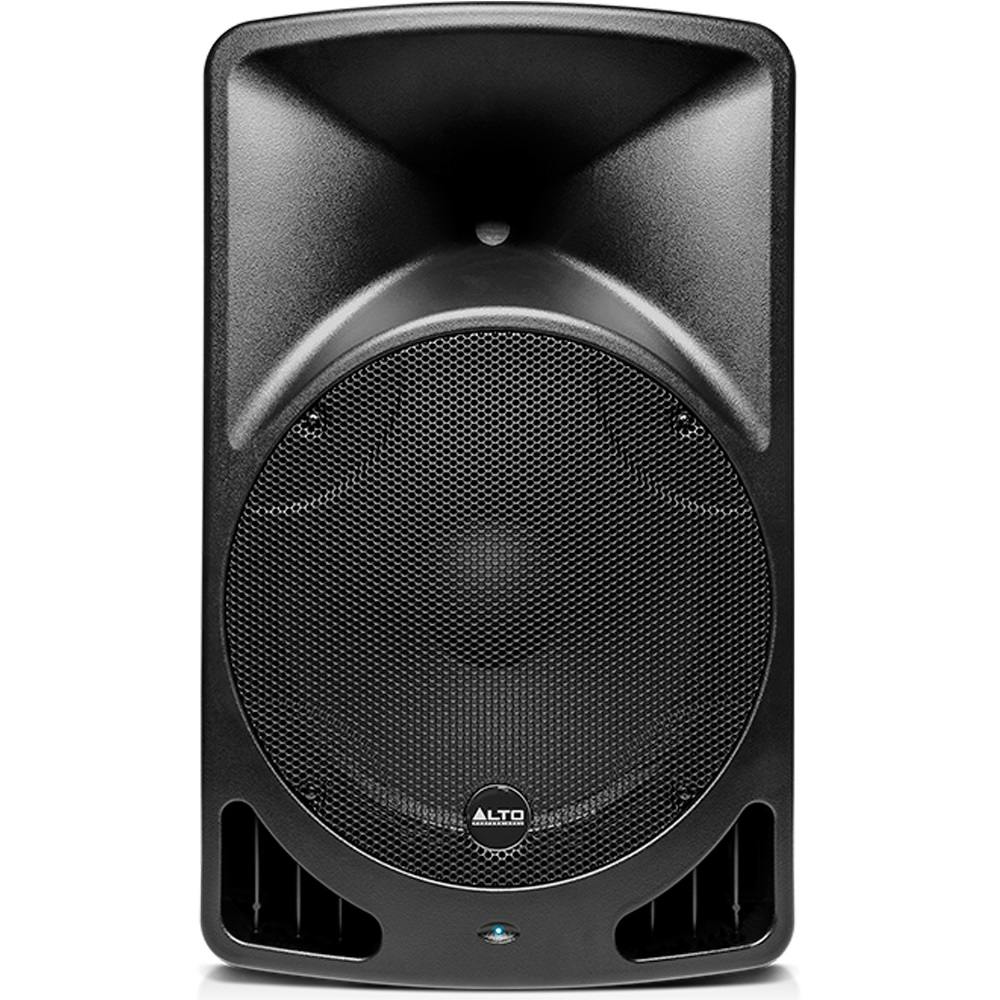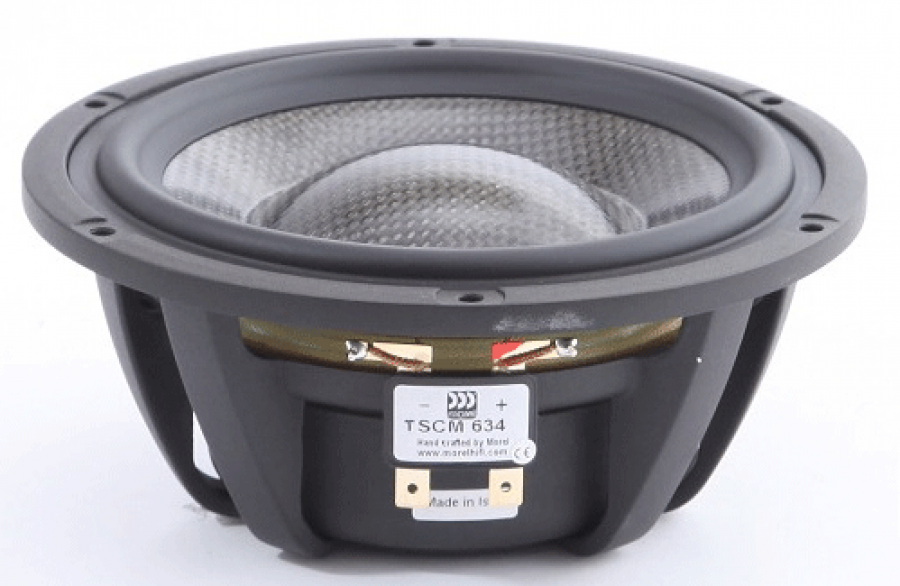Intro
Thanks for visiting the CODE Acoustics blog! If you’ve not heard of us, we’re a little company making high end domestic speakers in Woking, England (like the ones below).

and I’m the founder and chief designer, Ceri Thomas:

This blog series started after I visited Glastonbury Festival in 2017. There were many average sounding PA systems, but one or two very good ones. So I wanted to ask the basic question … ‘What can Hifi learn from PA?’.

Part one of the series looked at a couple of the best (IMO) PA sound systems at the festival:
Part two took a closer look at horn technology:
In part three we’ll focus our attention on drive units (that’s the thing below if you weren’t sure!):

The basics
I’m going to skim this pretty quickly as there is a lot of info already on the web covering this. Here is a good page if you want to dive a little deeper:
https://www.ht-audio.com/pages/SpeakerBasics.html
Essentially an electrical signal (current) from the amplifier is passed through the voice coil of the drive unit. When this happens the voice coil becomes an ‘electromagnet’ and it’s magnetic field interacts with that of the permanent magnet:
The principle is exactly the same as when you were a child and tried to push two magnets together:

The permanent magnet cannot move, but the electromagnet (voice coil) can. As the voice coil moves, it also moves the cone (they’re physically connected) and hey presto you have a pressure wave (sound).
Sensitivity vs. Efficiency
Before we get to the meaty part where we compare Hifi and PA drive units, It’s important to explain these two terms.
Both describe how effectively the drive unit can convert electrical energy into acoustic energy (sound).
Here is a small hifi speaker that probably has a sensitivity around 82dB for 1 watt input, measured at 1 meter, or 0.1% efficiency:

In contrast a PA speaker may have a sensitivity of 99db for 1 watt at 1 meter or 5% efficiency! Yes that’s 50 times more efficient than the Hifi speaker!

Sensitivity is how much sound output you get in decibels (dB) when you apply a 1 watt signal and measure at 1m. The problem is manufacturers often don’t follow a standard test procedure, so it’s very hard to compare data.
Reference efficiency is simply what percentage of input energy is translated into output energy in free air:

This can’t be fudged and is a far more accurate means of comparison.
If you want to have a play here is a reference efficiency calculator:
https://www.ajdesigner.com/phpsubwooferclosed/reference_efficiency_equation.php#ajscroll
How are PA and Hifi drive units different?
To explain this I’ve picked two 6″ midrange drive units.
The Hifi driver is the very competent (and expensive!) Morel TSCM634:

https://www.morelhifi.com/product/tscm-634/
The PA driver is a slightly more reasonably priced, but still very well made 18 Sound 6NMB420:

http://www.eighteensound.com/Products/Articles/catid/4050/eid/3407/6nmb420
The comparison
| 6NMB420 | TSCM634 | |
| Mms (g) | 8.5 | 15.3 |
| Sd (cms) | 130 | 119 |
| Qes | 0.38 | 0.56 |
| Fs (Hz) | 110 | 49 |
| Bl (Tm.) | 9 | 5.09 |
| Vas (l) | 6.1 | 13.3 |
| Power Handling (w.) | 200 | 150 |
| Ref Eff (%) | 2.03 | 0.27 |
| EBP | 289.5 | 87.5 |
There isn’t time to explain all the terms here, so if you’re not familiar with some or all of them, please have a look here:
https://en.wikipedia.org/wiki/Thiele/Small_parameters
What you can see is the Hifi driver has almost twice the moving mass of the PA driver (mms) and a motor that is almost half as powerful (Bl). This translates to widely different efficiencies. The PA drive unit is 7.5 times as efficient as the Hifi drive unit!
The plots
Below is a simple comparison of the the two drivers in a 20 litre reflex enclosure tuned at 40Hz in free space*.
*If you’re not sure what ‘free space’ is, there’s a section about it in Pt.2 of this series.

Red is the Hifi driver and white is the PA driver. Note that we’ve standardised the sensitivities for easier comparison.
It’s clear to see that the Hifi driver gives a lovely flat response in this box, yet the PA driver gives far less output as the frequency drops.
To get an even response for the PA driver, it requires a smaller box (3 litres) and a higher tuning frequency (130Hz).

Essentially the Hifi driver has a wider operating frequency band, or ‘window’ of frequency linearity.
*an octave is a doubling of frequency, so it could be 40-80Hz, 1000-2000Hz, 7500-15000Hz etc.
The graph below is the same plot as above, but this time showing the relative sound output achieved when each driver is fed 50 watts:

As you can see, the PA drive unit is giving an added 10dB over it’s operating band. This also means it’ll put significantly less strain on the amplifier to achieve a given volume.
The final graph shows you drive unit excursion in mm’s for the 50 watts input:

Despite the PA driver playing 10dB louder, it still hasn’t run out of x-max (linear travel) in it’s operating band. Whereas the Hifi driver is exceeding it’s x-max at 60Hz. However, it is worth noting, this is directly attributed to running the Hifi driver lower than the PA driver.
EBP
The usable frequency range of a drive unit can also be described by the parameter Efficiency Bandwidth Product (EBP), and is determined by dividing Fs by Qes.
It has traditionally been used to advise whether a drive unit should go in a reflex or sealed box:

Essentially a very high EBP will indicate the drive unit is highly efficient over a small bandwidth. A lower EBP will be less efficient, but have constant efficiency over a wider bandwidth.
The PA driver here has an EBP of 289.5 vs. 87.5 for the Hifi driver.
A very high EBP would also indicate a drive unit would work well in a horn.
The Caveats
I will have to do separate blogs on drive unit damping, thermal management and dispersion, as they’re big areas that warrant special attention.
There is also an argument to have about drive unit Max SPL and whether it’s acceptable to push them beyond their x-max. I’d argue no (from a technical point of view), but it depends what your priorities are.

Conclusion
This blog hasn’t tried to answer the question of whether Hifi or PA drivers are ‘better’. It’s purpose is simply to demonstrate that they exhibit different behaviours:
- A PA driver will give you higher sensitivity and max output, yet with a smaller window of frequency linearity.
- A Hifi driver will give you lower sensitivity and max output, yet with a wider window of frequency linearity.
However, stay tuned as our Big Evolving Sound System B.E.S.S (currently in build and shown below) will directly ask the question … can you make a very high quality Hifi speaker using PA drive units?!

Thanks for reading and if you have any comments, please just send me an email:
Ceri Thomas
Code Acoustics
info@code-acoustics.com



Interesting read, I am presently using a small stereo PA system (Peavey 2-way, 150w) for my hi-fi which I find better than my bookshelf speakers (Technics, die cast aluminium, 2-way, 75w)
However, for many, many years, my main drivers were 1960’s 2 way, 30, or 40w? (Celestions) due to the weaker amplification at the time; these had a much higher EMF sensitivity – the higher efficiency, and pressure wave as described.
LikeLiked by 1 person
Hi Ian, thanks for taking the time to have a read 🙂 I think a lot of people (once they’ve heard both efficient and inefficient speakers) would say the more efficient speakers sound more dynamic and engaging, so I’m not surprised your prefer your small PA speakers. Also, give me a large diameter bass driver over a small one any day of the week 🙂
LikeLiked by 1 person
PS my old Celestions, are not gone… merely having a quiet rest in the loft untill the call for action 😂
LikeLike